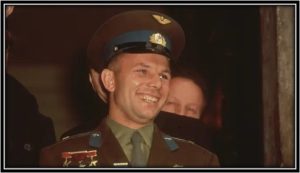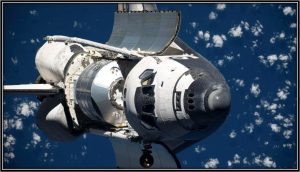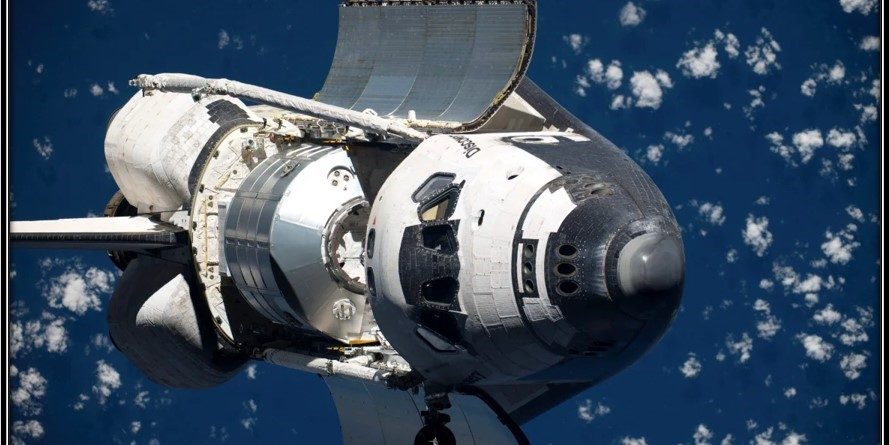This Day in Aviation Friday Evening Twofer. April 12th.
Contributor: Barry Fetzer
Sources: History.com
This evening it’s all space, all the time for our aviation history vignettes and it’s a twofer to boot. And what a twofer it is and a what a day April 12th was in the annuls of aviation history! Two massive aviation and space firsts happened on this special spring day. According to History.com, “On April 12, 1961, aboard the spacecraft Vostok 1, Soviet cosmonaut Yuri Alekseyevich Gagarin became the first human being to travel into space. During the flight, the 27-year-old test pilot and industrial technician also became the first man to orbit the planet, a feat accomplished by his space capsule in 89 minutes. Vostok 1 orbited Earth at a maximum altitude of 187 miles and was guided entirely by an automatic control system. The only statement attributed to Gagarin during his one hour and 48 minutes in space was, ‘Flight is proceeding normally; I am well.’

Russian cosmonaut Yuri Gagarin. (Credit: Keystone/Getty Images)
“The triumph of the Soviet space program in putting the first man into space was a great blow to the United States, which had scheduled its first space flight for May 1961. Moreover, Gagarin had orbited Earth, a feat that eluded the U.S. space program until February 1962, when astronaut John Glenn made three orbits in Friendship 7. By that time, the Soviet Union had already made another leap ahead in the “space race” with the August 1961 flight of cosmonaut Gherman Titov in Vostok 2. Titov made 17 orbits and spent more than 25 hours in space.
“To Soviet propagandists, the Soviet conquest of space was evidence of the supremacy of communism over capitalism. However, to those who worked on the Vostok program and earlier on Sputnik (which launched the first satellite into space in 1957), the successes were attributable chiefly to the brilliance of one man: Sergei Pavlovich Korolev. Because of his controversial past, Chief Designer Korolev was unknown in the West and to all but insiders in the USSR until his death in 1966.
“Born in the Ukraine in 1906, Korolev was part of a scientific team that launched the first Soviet liquid-fueled rocket in 1933. In 1938, his military sponsor fell prey to Soviet leader Joseph Stalin’s purges, and Korolev and his colleagues were also put on trial. Convicted of treason and sabotage, Korolev was sentenced to 10 years in a labor camp. The Soviet authorities came to fear German rocket advances, however, and after only a year Korolev was put in charge of a prison design bureau and ordered to continue his rocketry work.
“In 1945, Korolev was sent to Germany to learn about the V-2 rocket, which had been used to devastating effect by the Nazis against the British. The Americans had captured the rocket’s designer, Wernher von Braun, who later became head of the U.S. space program, but the Soviets acquired a fair amount of V-2 resources, including rockets, launch facilities, blueprints, and a few German V-2 technicians. By employing this technology and his own considerable engineering talents, by 1954 Korolev had built a rocket that could carry a five-ton nuclear warhead and in 1957 launched the first intercontinental ballistic missile.
“That year, Korolev’s plan to launch a satellite into space was approved, and on October 4, 1957, Sputnik 1 was fired into Earth’s orbit. It was the first Soviet victory of the space race, and Korolev, still technically a prisoner, was officially rehabilitated. The Soviet space program under Korolev would go on to numerous space firsts in the late 1950s and early ’60s: first animal in orbit, first large scientific satellite, first man, first woman, first three men, first spacewalk, first spacecraft to impact the moon, first to orbit the moon, first to impact Venus, and first craft to soft-land on the moon. Throughout this time, Korolev remained anonymous, known only as the “Chief Designer.” His dream of sending cosmonauts to the moon eventually ended in failure, primarily because the Soviet lunar program received just one-tenth the funding allocated to America’s successful Apollo lunar landing program.
“Korolev died in 1966. Upon his death, his identity was finally revealed to the world, and he was awarded a burial in the Kremlin wall as a hero of the Soviet Union. Yuri Gagarin was killed in a routine jet-aircraft test flight in 1968. His ashes were also placed in the Kremlin wall.”
Also on this special day of April 12th and according to History.com, “The space shuttle Columbia launched from Cape Canaveral, Florida, becoming the first reusable manned spacecraft to travel into space. Piloted by astronauts Robert L. Crippen and John W. Young, the Columbia undertook a 54-hour space flight of 36 orbits before successfully touching down at California’s Edwards Air Force Base on April 14.
“On September 17, 1976, NASA publicly unveiled its first space shuttle, the Enterprise, during a ceremony in Palmdale, California. Development of the aircraft-like spacecraft cost almost $10 billion and took nearly a decade. In 1977, the Enterprise became the first space shuttle to fly freely when it was lifted to a height of 25,000 feet by a Boeing 747 airplane and then released, gliding back to Edwards Air Force Base on its own accord.
“Regular flights of the space shuttle began on April 12, 1981, with the launching of Columbia. Launched by two solid-rocket boosters and an external tank, only the aircraft-like shuttle entered into orbit around Earth. When the mission was completed, the shuttle fired engines to reduce speed and, after descending through the atmosphere, landed like a glider. Early shuttles took satellite equipment into space and carried out various scientific experiments. On January 28, 1986, NASA and the space shuttle program suffered a major setback when the Challenger exploded 74 seconds after takeoff and all seven people aboard were killed.
“In September 1988, space shuttle flights resumed with the successful launching of the Discovery. In subsequent years, the space shuttle carried out numerous important missions, such as the repair and maintenance of the Hubble Space Telescope and the construction and manning of the International Space Station.

Space shuttle Discovery performs a 360-degree flip in 2009 with a background of earth’s puffy clouds in an azure blue sky.
Discovery operated from 1984 to 2011. NASA/Getty Images
“A tragedy in space again rocked the nation on February 1, 2003, when Columbia, on its 28th mission, disintegrated during re-entry of the earth’s atmosphere. All seven astronauts aboard were killed. In the aftermath, the space-shuttle program was grounded until Discovery returned to space in July 2005, amid concerns that the problems that had downed Columbia had not yet been fully solved.”







